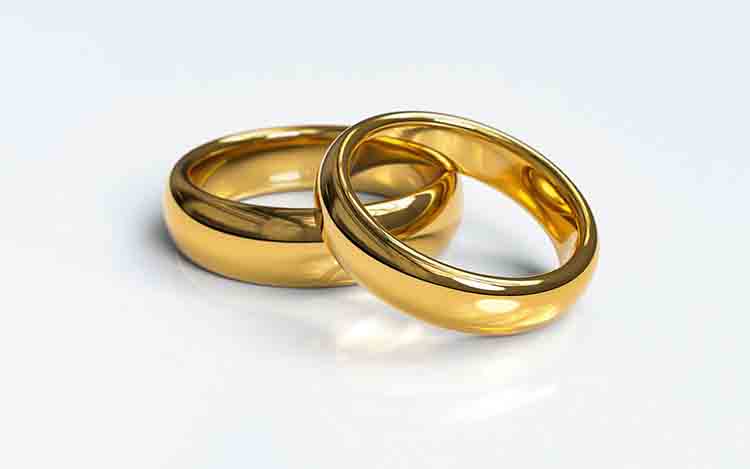As part of a decorative item, Nepali Jewllery not only beautifies personality but also carries Nepalese identity culturally as well as socially. Though, Nepalese jewellery may not different than the jewelleries made other corners of the world but the meaning it conveys is totally different. For Nepalese such small decorative items as rings, necklaces, earrings, pendants, bracelets, Fuli, Tilahari, and Bulaki not only signifies personality but also gives brief information about the wearer. Culturally there are accepted rules on who should wear what sorts of jewellery in Nepal. For example, only married women wear Tilahari, which signifies married status.
[ads2]
As an adornment, Nepali Jewellery could be attached to the body of wearer or hairs even on the clothes. The west and the east have their own perspectives on jewellery and its importance for individual and social life. The west views the item as durable an ornament excludes non-durables such as flowers. Whereas, the east also includes flowers as a decorative means for a person with very broad meaning. Since centuries Nepali Jewellery is made by only metal or combined with different gemstones that serve as decoration in jewellery.
Reasons to wear Nepali jewellery
There are various reasons why we wear Nepalese jewellery, one is for its functional, generally to fix personal wear or hair. But the most notable reason to wear Nepalese jewellery by Nepali people is that it symbolizes the social and personal status. Nepalese jewellery in Australia or elsewhere now serves as social status and prosperity of a person. Not only that Nepalese wear jewellery to symbolize their marriedness such as Tilahari, Mangalsutra or a wedding ring. [ads1]
Another major aspect of the Nepalese jewellery is it is used as a signifier of affiliation, which ethnic or social group they belong to. The shape and design of Nepalese jewellery symbolize the communal affiliation. Some groups of Nepalese population wear immense sized jewellery that gives their communal identity such as Magar, Limbu, Tharu and so on. People wear some sorts of Nepalese jewellery for protection from evil or supernatural powers. The talismanic protection is one of the reasons behind this artistic display and symbolizing personal meaning – such as love, bereavement, or even good luck.
Read Also: Questions That Will Help You In Buying The Dream House In Australia

Not limited to those aesthetic, cultural, supernatural and personal reasons Nepalese have had a long practice of buying jewellery as an investment. It is believed that investing in jewellery is free from risk and one can use it as cash when needed.
Things to consider before purchasing Nepali jewellery in Australia
If you planning to buy Nepali jewellery in Australia you need to consider a few important questions before you made a payment.
Gold or Silver Jewellery?
While buying jewellery the major question pops in the mind whether to buy Gold or Silver one? The purpose determines which you going to buy. Generally, for aesthetics Nepalese love gold, the yellow metal has really great attraction. Silver is used for a precise purpose such as to wear specific religious ‘Jantar’ or cultural reflection.
Is it Chaapawal or Tejabi Gold?
There are generally two types of gold we know very well, Tejabi or Chaapawal. Chaapawal is considered as pure gold and expensive than Tejabi. [ads1]
Tola or Gram?
Metals such as Silver and Gold often traded in Tola in Nepal and Nepalese Jewellery shops in Australia also follow the same scale. One Tola means 11.664 grams. Always check the price of gold in grams.
Check the exact amount you buying?
Price of gold jewellery is a bit complicated because when you purchase a jewellery from a jeweller the price includes Jyala, Jarti, and Rasayan too. A good jeweller always keeps it simple in receipt how much you paying for gold or silver you paying and how much for the labor charge.
Read Also: All you need to know about buying a car in Australia

Buy-back terms
Another aspect you need to be clear about buy-back terms while purchasing Nepalese jewellery in Australia. Often jewelers offer buy-back if you want to sale the jewellery later for cash or exchange with contemporary designs. Check the conditions whether they will buy back on the prevailing rate, no matter if the price goes up. You must know the actual amount of gold and about Jyala, Jarti and Rasayan which will impact on price later when you going to sale it. Also check if there are any policy and period for exchange and buy-back, in case you need to return the jewellery for any complaint.
Receipt on Purchase
To ensure the quality, amount and buy-back terms you need to insist a receipt and keep it safe. The receipt should include all pricing factors and clearly shows the amount of gold or silver you are buying also the terms and conditions. Later if you got any situation and need to sale the jewellery in Nepal you need to show the receipt to ensure that one was traded legally.











